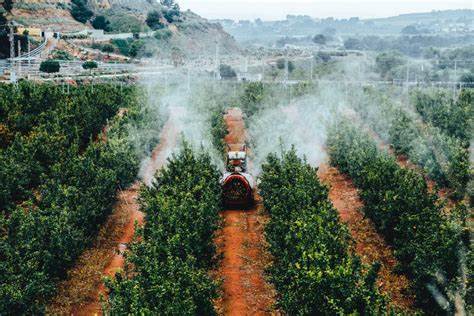
Introduction
In this article, we will explore the concept of carbon footprint and its relevance to environmental sustainability. Specifically, we will delve into the importance of studying the carbon footprint in the context of vertical farming, a modern agricultural practice that holds promise for reducing carbon emissions.
Historical Background
To understand the significance of the carbon footprint in vertical farming, it is essential to provide a brief overview of its history and development. We will also discuss the evolution of awareness and concern for carbon emissions in the agriculture sector, highlighting the need for sustainable farming practices.
Key Concepts and Definitions
Carbon footprint, a term often associated with environmental impact, requires clarification in the context of vertical farming. This section will define carbon footprint and its components within the vertical farming framework. Additionally, we will explain the concept of vertical farming and its potential benefits in reducing carbon emissions. To better comprehend the topic at hand, we will also define other relevant terms such as energy consumption, water usage, and greenhouse gas emissions.
Main Discussion Points
Energy Efficiency in Vertical Farming
Energy-efficient technologies and practices play a crucial role in vertical farming. In this section, we will discuss the various strategies employed to minimize energy consumption in vertical farming. Comparing vertical farming to traditional agriculture, we will highlight how vertical farming stands out in terms of energy efficiency. Renewable energy sources offer an additional opportunity to further reduce the carbon footprint of vertical farming. We will explore the role of renewables in sustainable vertical farming practices.
Water Conservation in Vertical Farming
Water-saving techniques and technologies are integral to the success of vertical farming. We will delve into the specific methodologies employed to conserve water resources in vertical farms. By outlining the differences between vertical farming and conventional agriculture in terms of water usage, we will emphasize the environmentally-friendly nature of vertical farming. Water conservation plays a crucial role in reducing the carbon footprint of vertical farming. We will highlight its importance and the potential for further improvements in this area.
Waste Management and Emissions Reduction
Effective waste management strategies contribute significantly to reducing emissions in vertical farming. We will discuss various approaches for waste management in vertical farms. Vertical farming minimizes the release of greenhouse gases through its controlled environment and optimized cultivation methods. We will explain how this results in reduced emissions. Circular economy practices and waste utilization hold immense potential for further reducing the carbon footprint of vertical farming. We will explore these avenues and their benefits.
Case Studies or Examples
Real-world examples of successful vertical farms will be presented to illustrate the effectiveness of reducing the carbon footprint. We will highlight the environmental benefits achieved by these farms. Specific projects or initiatives will be discussed to showcase how vertical farming positively impacts the environment through carbon footprint reduction.
Current Trends or Developments
Recent research findings related to the carbon footprint of vertical farming will be explored. This section will provide insights into the latest developments in the field. Emerging technologies or practices that further reduce the carbon footprint will be highlighted, emphasizing the continuous evolution of vertical farming. The adoption and integration of vertical farming in urban environments have significant implications for carbon emissions. We will delve into this trend and its environmental impact.
Challenges or Controversies
Despite its many advantages, vertical farming faces certain challenges in reducing its carbon footprint. This section will address these challenges and limitations. Differing viewpoints or controversies surrounding the effectiveness of vertical farming in environmental sustainability will be discussed, providing a comprehensive overview of the topic.
Future Outlook
Speculating on the potential future implications and advancements in reducing the carbon footprint of vertical farming, we will explore the long-term prospects for sustainability. The role of vertical farming in sustainable food production and climate change mitigation will be discussed, highlighting its importance in shaping a greener future.
Conclusion
In conclusion, this article has explored the various aspects of carbon footprint in vertical farming. We have discussed the significance of studying and reducing the carbon footprint to achieve environmental sustainability, particularly in the context of vertical farming.
References
For further reading and research on the topic of carbon footprint in vertical farming, we suggest consulting relevant sources, articles, books, or studies that provide in-depth insights into this subject matter.